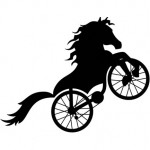 The land is thick with them: bicycles. It lends itself to them: the land. It is largely flat, destinations are close and congestion is the norm. Even the prime minister cycles to work. Bicycles. So convenient they are too: you drag them out of their stall, check the tyres, jump on them and ride. Back home you leap off, clean off any dirt and put them back in their stall until the next time you need them. And so versatile they are too: mountain-bike the dirt tracks on Saturday, cruise to a picnic on Sunday and race to work on Monday. They will do all of that and more but never complain. And if wear and tear gets the better of your bicycle, you simply throw it out and get another one. Then there are the hairy bicycles. And the land is thick with them too. But what are these hair bicycles and why do I find myself in search of Houyhnhnms?
The land is thick with them: bicycles. It lends itself to them: the land. It is largely flat, destinations are close and congestion is the norm. Even the prime minister cycles to work. Bicycles. So convenient they are too: you drag them out of their stall, check the tyres, jump on them and ride. Back home you leap off, clean off any dirt and put them back in their stall until the next time you need them. And so versatile they are too: mountain-bike the dirt tracks on Saturday, cruise to a picnic on Sunday and race to work on Monday. They will do all of that and more but never complain. And if wear and tear gets the better of your bicycle, you simply throw it out and get another one. Then there are the hairy bicycles. And the land is thick with them too. But what are these hair bicycles and why do I find myself in search of Houyhnhnms?
The Houyhnhnms
In the early part of the eighteenth century a British gentleman with qualifications in medical practice from the University of Leiden in the Netherlands, amongst other establishments, and a working knowledge of numerous languages including both High and Low Dutch, headed out to sea and adventures which took him to some of the most outlandish places never before known to man. Soon after returning to settle in England, he effectively cut all ties to his fellow human beings and five years later published a book entitled Travels into Several Remote Nations of the World. The author called himself Lemuel Gulliver and his portrait fronted the title page.
At the time the author’s biography was as credible as the contents of his book were incredible. Many people believed that he was as real as his stories were not. Surely they could not be true, for they described lengthy journeys to fantastical lands inhabited by even stranger creatures? The last of these was the land of the Houyhnhnms, a country run by horses for horses. The term, ‘houyhnhnm’, means ‘perfection of nature’ in the language of the Houyhnhnms. Ever in the moment, they had no need of morality and were entirely guided by the urge to survive, which they could only do together with each other. In this Gulliver found them to be eminently admirable. Their essence he describes as follows:
Friendship and benevolence are the two principal virtues among the Houyhnhnms; and these not confined to particular objects, but universal to the whole race; for a stranger from the remotest part is equally treated with the nearest neighbour, and wherever he goes, looks upon himself as at home.
Jonathan Swift, Gulliver’s Travels
The Yahoos
The only potential threat to the horses known as the Houyhnhnms was to be found in a race of creatures resembling humans and hence Gulliver himself. To all intents and purposes, they were identical to the humans we are and know with the exception that they had been stripped of eons of material development and the veneer of civility.
In their essence they were the very same humans who are capable of an unamplified version of the darker side of what we have become as a species. As Gulliver describes them, the Yahoos – for so they were called – ‘with some appearance of cunning, and the strongest disposition to mischief, were observed to be the most unteachable of all brutes’. Gulliver himself was forced to leave the land of the Houyhnhnms, because he was deemed to be a singularly astute Yahoo and hence a threat to the society of horses.
The land of hairy bicycles
And lo, some 300 years later it came to pass that a man and woman took to the air with a horse and a dog in search of that ultimate life-changing experience and crossed to the other side of the world, only to discover that they had become marooned in the land of the hairy bicycles. The land is thick with them: these hairy bicycles. It lends itself to them: the land. It is largely flat, is crisscrossed with rights of way and bridle paths, and has ample facilities for the creation, training and storage of these hairy bicycles.
So convenient they are too, these hairy bicycles: you drag them out of their stall, check their hooves, jump on them and ride. Back at the stable you leap off, clean off any dirt and put them back in their stall until the next time you need them. And so versatile they are too: you can race them until their bodies conk out, risk their lives and limbs in games and cross-country events, jump them out of their comfort and safety zones, prance them in pretty outlines against hard steel in their mouths, and do all of this and more in the pursuit of profit, prestige and social acceptance. And should they complain, you can simply throw them out and get another, if wear and tear does not get the better of them before that. Such is life at the hairy end of the land of bicycles.
A refuge in the land of hairy bicycles
And so it came to pass that the man and woman who had become marooned in the land of hairy bicycles, found refuge for their mare in a small livery yard in the south of the country. Although they shared the facility with hairy bicycles, the owners of the yard were sufficiently enlightened and tolerant to accommodate the couple’s strange aversion to turning their mare into a hairy bicycle. They gave the man and woman as much freedom as they could and even went beyond the call of duty to help the horse and facilitate her care whenever necessary. And the man and woman were exceedingly grateful.
Time passed as the couple and their horse enjoyed each other’s company in a variety of mutually pleasurable ways, until some nine months later a hairy bicycle came into their lives. The woman spent some months helping the hairy bicycle to rediscover some vestige of the horse that had become buried underneath her hairy bicycle trappings before its owner confided that she was no longer able to keep it due to health issues. The man volunteered to take over the hairy bicycle and in due course the couple and their horse were joined by another mare.
The Ice Queen cometh
And so it came to pass that within a month an ice queen descended from the north and took over the livery yard bringing with her a number of hairy bicycles accounting for half the equines kept in the facility. The jumping arena was realigned and the indoor manège was resurfaced. New staff were introduced, the daily routines collapsed and chaos came to prevail.
For many months the livery yard lurched from one drama to another, some severely compromising the health and safety of the equines, including the couple’s mares, and at least one human housed in the facility. A new member of staff arrived and literally deserted the place within months. The bulk of the problems were due to mismanagement and the Ice Queen’s obvious lack of expertise and experience in what is involved in managing a livery yard. As people experienced in running an eight-hectare horse property, the man and woman helped out where they could, doing this so effectively that the Ice Queen almost confused them with her staff.
The Writhing Instructor
Before the Ice Queen arrived, the livery yard had also served as the venue for hairy bicycle writhing lessons provided by a very friendly writhing instructor with a splendid sports car. Most of the students were youths, many of whom did not have an equine at the livery yard. Several months ago the writhing instructor, sensing an opportunity amongst the turmoil, managed to win the Ice Queen’s confidence and trust, presumably also because they share a commitment to and enthusiasm for hairy bicycle activities employing a rigorous hairy bicycle approach.
Within a matter of weeks the next member of staff left, this time thrown out in a blaze of anger and aggression sparking a major drug-related crisis (see my post entitled When Freedom Comes). Several weeks later a long-standing member of staff who had been instrumental in holding everything together as the chaos had unfolded over the preceding months handed in her notice in response to abuse and has finally left but not before the writhing instructor had emerged as the new voice of the Ice Queen. Adopting the guise of the facility manager, she plays a pivotal role in planning and implementing the facility’s daily regime, and uses the facilities to ‘train’ the Ice Queen’s horses, to give writhing lessons to students, many of whom do not have any equines stabled at our facility, and to exercise two of the horses she owns which are stabled there.
The art of writhing
The life of a hairy bicycle is a challenging one and some equines cope with it better than others. On the whole they are condemned to imprisonment in a small square rectangular indoor cell for 16 hours or more a day, which compromises their entire physiology and immune system. In most cases they wear metal shoes, which inhibit the blood-pumping action of the foot and enhance the shock of the hooves impacting on the ground. They may be exercised for up to an hour a time with a frequency varying from possibly an hour a day to an hour a week or less. And when they are exercised, they are required to submit to every physical restraint which their human deems necessary for his safety, and every instrument of force which their human deems necessary to ensure that the hairy bicycle does only what the human wants when the human wants it.
If the young and other students look to their writhing instructor for guidance, this is the hairy bicycle management regime that they are likely to learn but more as an offshoot of their primary pursuit, which is writhing a hair bicycle. To do this, they are taught to make their hairy bicycle move as fast as possible into the metal in their mouths – if necessary spurred on by …. (of course, that is where the word comes from, is it not?) – which they learn to pull back on until they force their hairy bicycle as prettily into a frame as their Olympic heroes do.
Some hairy bicycles
In a moment of morbid curiosity, I once asked the Writhing Instructor to explain why she was lungeing a hairy bicycle in a circle with its head restrained with ties which held its nose in line with its poll vertical to the ground. She explained that it was to help the equine to collect itself by teaching it to move rapidly into the metal in in its mouth. Clearly, writhing instructors need not be burdened by any knowledge of equine physiology and biomechanics.
I have seen the heads of horses and ponies tied down in this fashion with nothing more than a rope from the bit to the girth to allow young girls to participate in writhing lessons. I have seen a Haflinger pony with a foot condition crippled in writhing lessons within one to two weeks. I have seen an Arab gelding regularly ridden into pain in writhing lessons, sometimes with his head tied down to allow a child to ride him, until his feet eventually gave way and he is now lame. I have seen the same horse put into a lesson two weeks after he went lame in order to ‘check whether he is still lame’. That same hairy bicycle is now kept standing in a stall for 21 hours a day, because his hind feet can no longer carry him properly and there is a chance that he may be euthanised (‘killed’ to you and me). I have seen the Writhing Instructor’s sweet four-year-old mare (her bones are not even fully developed at this age) ridden even though she is grossly underweight. I have seen the same mare hobble about with a metal shoe on one fore hoof and none on the other for up to a fortnight while her owner was on holiday. I have not had to leave our livery yard to see all this and more. If any of these hairy bicycles had been dogs, we would have called in the RSPCA, Humane Society or their equivalent some time ago.
The chaos continues
Last week I had a lengthy chat with the Writhing Instructor and her assistant. They insisted that the facility was running better ever. I begged to differ. Not too long before that, within 24 hours after Vicki and I had returned from celebrating our 30th anniversary in Prague, they decided to worm the horses and on the same day open up a new section of the field that is home to the clients’ herd without weaning the horses on to it, even though the grass was very long and the section had been closed off for many months. Some hours later another assistant gave the horses a major carrot overdose. Anaïs went down with colic and a vet had to treat her two days in a row. Fortunately, she has recovered but we are left with a sizeable vet bill and no one waiting in line to assume responsibility.
Once Anaïs had recovered, Vicki started weaning her back into the enlarged field half an hour per day. This meant that Anaïs had to spend the rest of the time in another field, which has virtually nothing left to eat in it, and which turns into a mud bath when it rains and an ice rink when it freezes, as it has just done for about 10 days or more now. I had to beg the Ice Queen for an alternative field, receiving an insulting reply for my pains. Ultimately though we got our field if only temporarily, for Anaïs is now back with the herd.
The hairy bicycle order of priority
Vicki and I have been informed that the Ice Queen has decided that all of the horses in livery (about half the number in the facility) are to be confined to one large and one small field (the swimming pool cum ice rink) together representing about a quarter of the area covered by all of the available fields (with the exception of a stallion turned out in a small field on his own). The remaining fields (three quarters of the available land area) are to be reserved for the Ice Queen’s hairy bicycles (the other half of the equines in the facility), half of which are only turned out for about three hours a day and the rest a little longer.
The Writhing Instructor has also informed me that a strict order applies in relation to the use of the facilities, such as the indoor manège, which has become hotly contested as we have headed through the wet of autumn into the cold, rain, sleet and snow of winter. Half the day is reserved for the Writhing Instructor and others to exercise the Ice Queen’s horses, following which the Writhing Instructor enjoys priority to give writhing lessons to people from inside and outside the facility, after which she and another member of staff are entitled to writhe their hairy bicycles, as are others who writhe client horses. Then and then only, are non-riders such as Vicki and myself allowed in. Such is the hairy bicycle order of priority.
Take it or leave it
Times are very difficult for the people of the European Union and the outlook is bleak largely thanks to the ineptitude of our ‘leaders’ (or their collusion with big business, depending on your point of view). In such times people look around for ways to secure their livelihood. The Writhing Instructor has found and capitalised on an opportunity to do just this. I do not begrudge her this and wish her well.
What I do have difficulty with is this. Humans I care about have been hurt in the process. In addition, our horses’ health and wellbeing are being compromised and our ability to interact with them is being restricted by the dark, heartless hairy bicycle regime that is descending on our livery facility. Last week the Writhing Instructor made it very clear to me how much she and the Ice Queen value us as paying clients. In response to my questions, she effectively said take it or leave it. When the matter is presented as unequivocally as that, the question is no longer whether our horses will leave but when, and where they will go to.
What now?
The first snows have come and gone but the frost remains. Last weekend the snow covered the earth with a pristine canvas of new beginnings gleaming hues of white in the morning sun. Tucked behind our home, the snow-encrusted gardens and pond elicited gasps of admiration and a calm sense of being. What tracks will we make through the snow of our untrodden future as we look around for the direction we should now be taking?
We arrived at the livery yard on Saturday to learn that it had been decided that all of the horses were to be kept inside and not turned out. I promptly insisted that Anaïs and Pip would be going out and was told that clients could turn their horses out at their own risk. There was none. Our mares enjoyed having the snow-bound field to themselves nudging the white flakes aside to get to the frozen grass beneath. Later we took them for a walk through the snow in the forest and saw two deer bound across the path in front of us. The hairy bicycles were kept indoors from Friday afternoon until Monday morning.
Signs of the houyhnhnms
Although it is true that the hairy bicycle regime is not unique to our livery yard and that there are thousands of similar stories that could be told in this country and others, there are growing signs that there are houyhnhnms out and about in the land. From time to time Vicki and I come across flickers of enlightenment which give us hope.
One such flicker recently arrived in the form of a glossy magazine with a print run of 50,000, which has recently been circulating here in the Netherlands. It is a publication entitled Paard & Welzijn [Horse and Wellbeing] which is mainstream enough to feature the multiple WEG and Olympic Games gold medal winner, Anky van Grunsven, and which has been published by the following Dutch organisations: Stichting Levende Have (a knowledge network for people who keep animals as a hobby), the Nederlands Hippisch Kenniscentrum (the Dutch Equestrian Knowledge Centre) and the Sectorraad Paarden (the Equine Sectoral Council). The content and layout of the magazine are structured around the following 12 ways of loving your horse, which are worth citing here (my translation):
- Give them appropriate feed.
- Give them space.
- Give them adequate movement.
- Allow your mare and foal to remain with each other as long as possible.
- Ensure that you have a safe field with a shelter in it.
- Prevent bad stable habits from developing.
- Allow them to have a great deal of contact with their own species.
- Keep a close eye on insects and parasites.
- Let them keep their coat.
- Base your training on the nature of the horse.
- Do not place them in a dark stable.
- Also allow reason to play a role when buying a new horse.
Although these recommendations are by no means revolutionary, it is clear to me that their implementation here in the Netherlands would revolutionise the horse industry. Both horses and humans would benefit greatly. Is this yet another sign that the houyhnhnms are not far off after all? And yet I seem to search in vain for them in our livery yard.
Appeal
As you may have gathered from this post, Vicki and I are seriously looking for new accommodation for our horses (and ourselves as well if necessary). Our preference is to have the horses with us at home, although we are prepared to look at alternatives. Some of the absolutely essential criteria are as follows:
- they need to be able to spend as much time moving around outdoors as possible;
- if they are not stabled at night, they will need a walk-in, walk-out shelter;
- they need to be kept close to a forest with walkways;
- an exercise area would be handy.
If you know of anything which might be suitable for Anaïs and Pip, please let us know. Distance need not be an issue, because we have the type of business that allows us to move and find new accommodation close to our horses.
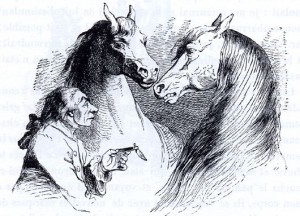
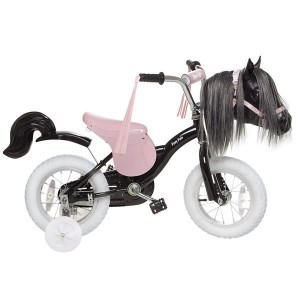


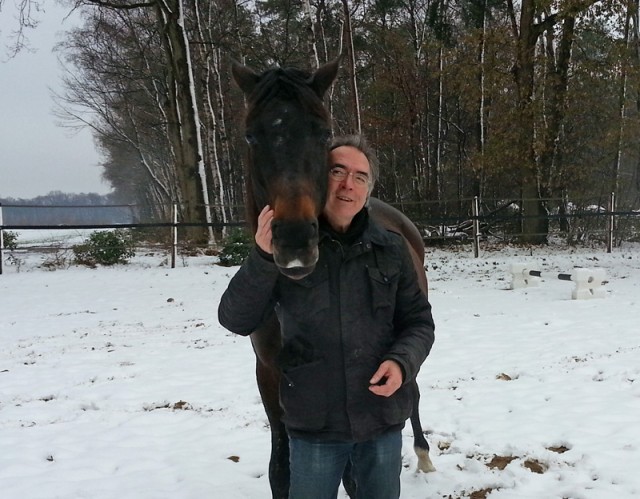


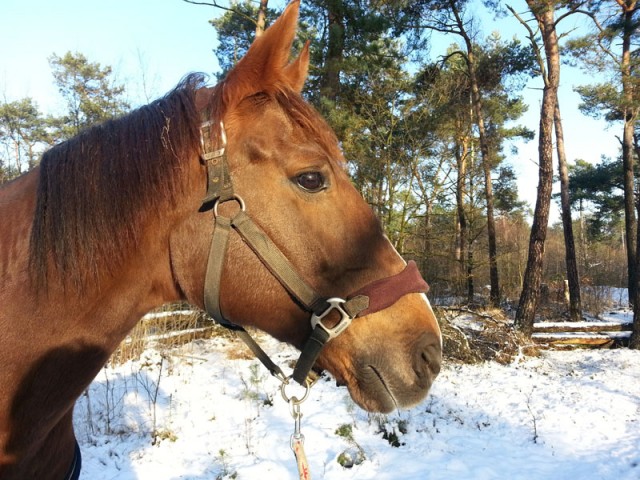
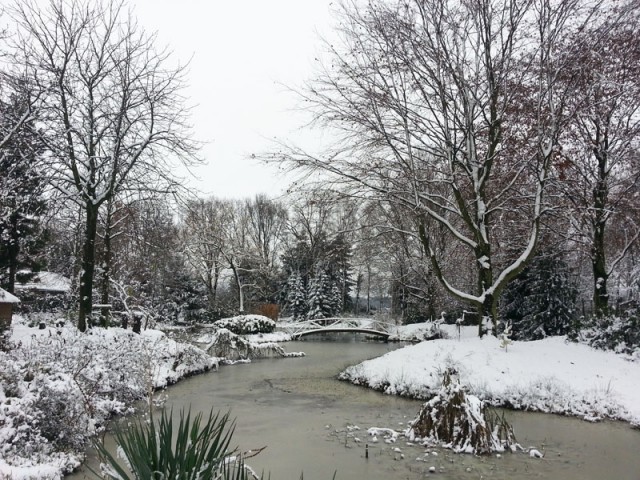



Hello Andrew, and thank you.
Your blog makes me realize how fortunate we are here in Australia, to have our own
properties, which enable us to do our utmost for our precious friends. It may not be absolutely perfect but so much better than some.
I trust there will be somewhere soon for you and your horses
Hugs to all,
Peggy.
Dear Peggy
Yes, you are indeed fortunate to have your own property with your horses at home. Hopefully it will not be too long before we have ours with us again.
Until then, something will sort itself out. It always does.
Be well!
Andrew
Well, what can I say?
Australia is looking pretty good!!! Hope it all works out for you!
Cheers,
Heather
Dear Heather
Australia is a fond memory, although a bit wet on the east coast the last time I looked.
I am sure it will all work out, as long as we are able to recognise and respond to the opportunity when it presents itself.
Be well!
Andrew
Phew – another very beautiful picture of the garden – I am sure both you and Vicky can still appreciate this expression of nature even though the situation at the livery yard is far from appreciative – well at least that is the impression I get – it was a long story to get to the heart of the matter.
I do wish you will write a book some time in the future where the above post will be one of the chapters – no doubt.
In the Schoorl area there is forest (small and bigger) with walkways – not much flat though – through the forest one can walk with one’s horse all the way via the dunes to the beach – personal experience tells me that is do-able although I only went half way to the beach – I had no clue how long it would take us and one hour to and one hour back would have been a little too much.
The livery yard Marcello is stabled has facilities where the horses are outside day and night – if the wish is there the horses can be stabled during the night in winter – during summer most horses stay out day and night – during winter some horses stay out day and night – there is no shelter – the livery yard’s outdoor area is situated alongside a small forest and those trees give sufficient coverage – there is an exercise area – everybody uses it – no appointments made.
All horses live in a large herd – Marcello was part of the herd for a couple of months – then he wanted an older (24 yrs) mare to join is little band – the mare had other plans and its owner didn’t like Marcello’s behaviour – from that moment Marcello lives separate but has contact with the herd from a little distance – that has turned out to be better for all parties concerned.
There are a few other horses (showjumpers) that do not live in the herd either – they belong to a Russian couple that spend the wintermonths in Holland.
Next to Marcello’s livery yard there is another yard – even more basic – have no details there.
In the Schoorl area it might be possible to find a holiday home – there are plenty.
http://www.staldapper.nl
They do not breed or sell Haflingers anymore.
They still have a herd of Haflingers – they are being ridden by girls of various ages.
Well, this is A possibility – I wish you many more so there are sufficient livery yards to chose from
Take care
Geerteke
PS http://www.youtube.com/watch?v=MBMCthEO0-U
Dear Geerteke
Thank you so very much for going to all the trouble. Your Marcello is a handsome fellow and his home seems to be quite special. For a moment I was tempted to explore this opportunity further.
Since I published this post, we seem to have developed an acceptable modus vivendi at the livery yard, which should give us time to come up with a long-term solution. After living in a holiday cottage for 15 months before we moved into our present home, I am a little hesitant in taking what may become just another step in a nomadic adventure. Permanence may be an illusion but settling down again has its appeal.
Be well!
Andrew
Dear Andrew
What an interesting and imaginatively expressed post. Although you astound me with visions that even surpass mine, I’d love to have you as an ally here in Portugal. Given that the people here are being squeezed out of existence, there is lots of land and there are fantastic mansions going to ruin. With your independent source of income, you could create dream conditions for yourselves, your horses and help enhance the quality of life for those here, too. And, furthermore, join me in the new tradition I am creating based on mutual enrichment of life for both horse and human.
Incidentally, there are already many Dutch people settling in the North of Portugal because of their dissatisfaction with life in Holland in search of a dream. That said, few find it, but they are not guided by horses:-) And even become quite disoriented and lost.
It would be dishonest of me not to admit that life is hard here, but we ARE close to nature and its infinite beauty. We also live in a pollution free environment that permits old men like me to run up and down mountains often due to the frolicking of horses.
Maybe it is your next step and I’d like to think so… come help me recreate the Garden of Europe as it was made to be, enlightened by the magic of horses.
Ian
Dear Ian
Yours is a curiously appealing invitation, although I must confess that I do not really understand why, given that I know little about Portugal other than what an appreciation of fado and the language offers, and what a brief but pleasant visit to Lisboa (once I heard the lush Portuguese pronunciation, I could never again settle for our sterile ‘Lisbon’) presented at the time.
I look at the pictures of your piece of paradise in northern Portugal and am tempted to board a plane to visit you tomorrow. Although we have one of the highest equine population density figures in the world, overall Holland is not a good place for horses. With but a few exceptions the flat land holds water for far too long, the country is the most polluted in the EU, and the grass is far too rich for horses.
It is clear to me that we must find a home for ourselves and our horses in nature but not just anywhere. It must be a place that sings to the soul and has the potential to be a happy, healthy home.
Perhaps we will meet each other soon. I am tempted by the vision of old men running up and down mountains together with frolicking horses.
Take care!
Andrew